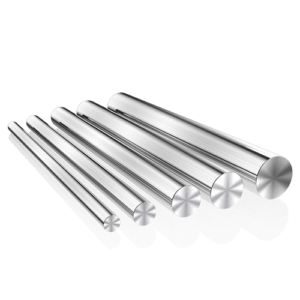Introduction

In the realm of stainless steel alloys, 303 stainless steel stands out as a popular choice for various applications due to its unique properties and characteristics. However, it’s crucial to understand how it compares to other alloys to make informed decisions. This comparative analysis delves into the distinctive features of 303 stainless steel and contrasts it with other commonly used alloys.
Properties of 303 Stainless Steel
Before diving into the comparison, let’s first explore the properties of 303 stainless steel. Known for its excellent machinability, corrosion resistance, and formability, 303 stainless steel contains sulfur to enhance machinability, making it suitable for intricate parts manufacturing in industries like aerospace and automotive.
Comparison with 304 Stainless Steel
303 stainless steel is often compared to its close counterpart, 304 stainless steel. While both alloys exhibit excellent corrosion resistance, 304 stainless steel surpasses 303 in terms of overall corrosion resistance, especially in harsh environments. Additionally, 304 stainless steel offers better weldability, making it a preferred choice for welding applications.
Comparison with 316 Stainless Steel
When compared to 316 stainless steel, which is renowned for its superior corrosion resistance, 303 stainless steel falls short. While 316 stainless steel excels in corrosive environments, it sacrifices machinability, which is a distinct advantage of 303 stainless steel. Therefore, the choice between these alloys depends on the specific requirements of the application.
Comparison with 17-4 PH Stainless Steel
In contrast to 303 stainless steel, 17-4 PH stainless steel boasts higher strength and hardness, making it suitable for applications that demand exceptional mechanical properties. However, this enhanced strength comes at the expense of machinability, where 303 stainless steel holds a significant advantage.
Comparison with Duplex Stainless Steel
Duplex stainless steel combines the properties of austenitic and ferritic stainless steels, offering high strength and excellent corrosion resistance. While duplex stainless steel outperforms 303 stainless steel in terms of strength and corrosion resistance, it falls short in machinability, making 303 stainless steel a preferred choice for machining-intensive applications.
Comparison Chart

| Property | 303 Stainless Steel | 304 Stainless Steel | 316 Stainless Steel | 17-4 PH Stainless Steel | Duplex Stainless Steel |
|---|---|---|---|---|---|
| Machinability | Excellent | Good | Fair | Poor | Fair |
| Corrosion Resistance | Good | Excellent | Excellent | Good | Excellent |
| Strength | Moderate | Moderate | High | High | High |
| Weldability | Good | Excellent | Good | Fair | Fair |
| Cost | Moderate | Moderate | High | High | High |
| Typical Applications | Shafts, fittings, fasteners, intricate components,requiring, high machinability | Food processing, architectural, structures, automotive parts, machinery | Marine equipment, pharmaceutical, equipment, chemical processing | Aerospace components, medical devices, automotive parts | Chemical processing, oil & gas, desalination plants |
Conclusion
In conclusion, 303 stainless steel exhibits exceptional machinability, making it an ideal choice for applications requiring intricate part manufacturing. However, its corrosion resistance may not match that of other stainless steel alloys like 304, 316, or duplex stainless steel. Therefore, the selection of the appropriate alloy depends on a careful consideration of the specific requirements of the application, balancing machinability with corrosion resistance and mechanical properties.
FAQ
Q: Can 303 stainless steel be welded?
A: Yes, 303 stainless steel can be welded using common welding techniques. However, it’s essential to use proper welding procedures to avoid issues like carbide precipitation, which can reduce corrosion resistance.
Q: Is 303 stainless steel suitable for outdoor applications?
A: While 303 stainless steel offers decent corrosion resistance, it may not be the best choice for prolonged exposure to harsh outdoor environments. In such cases, alloys with higher corrosion resistance, like 304 or 316 stainless steel, may be more appropriate.
Q: What are the typical applications of 303 stainless steel?
A: 303 stainless steel finds applications in various industries, including aerospace, automotive, medical devices, and machining. Common applications include shafts, fittings, fasteners, and intricate components requiring high machinability.
